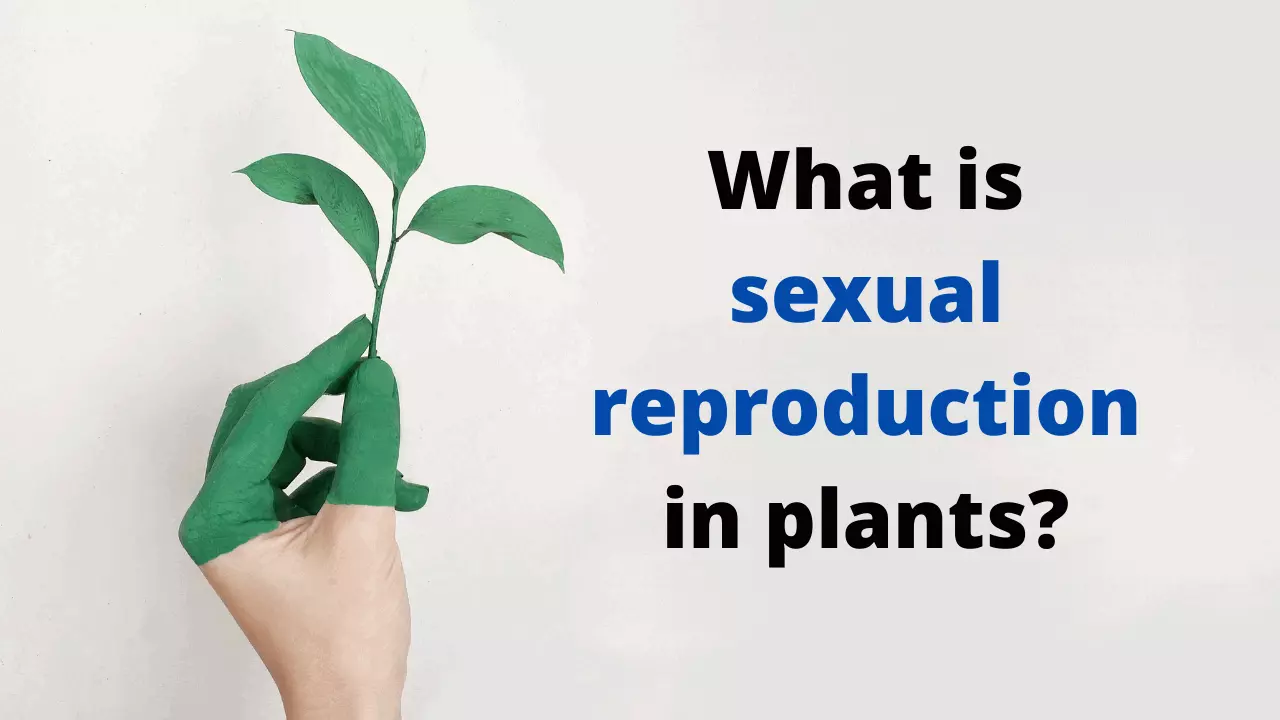
What is sexual reproduction in plants?
In this article we are going to discuss about sexual reproduction of plants, it's process in detail, so let's start with-
What is sexual reproduction in plants?
The sexual reproduction of plants is the set of processes through which plants multiply producing seeds, from which new organisms genetically different from their parents are formed.
Plants are living beings and, therefore, they meet the main requirements that define all organisms: they are capable of feeding, metabolizing food and growing; to interact with their environment, to adapt to it and to reproduce.
Through reproduction, plants, like animals and other living beings, are capable of increasing the number of individuals in a population and, furthermore, of passing their genes to offspring.
How do plants reproduce?
Plants have two forms of reproduction: a sexual form and an asexual one. This time we are going to talk a little about sexual reproduction, but we need to know that asexual reproduction is also very important and that it is highly exploited by humans to obtain food.
The sexual reproduction of plants occurs in a special reproductive organ - the flower . From sexual reproduction , seeds are formed , and it is these special structures from which new plants are formed.
In the flower, a male sex cell fuses with a female sex cell to form another new cell called a zygote, which is eventually enclosed within protective walls, forming a seed capable of withstanding various adverse conditions. This is the process of fertilization .
Zygote is also the name given to the cell that is formed when the egg and sperm of two animals fuse during sexual reproduction, from which an embryo and later a fetus are formed.
Thus, the sexual reproduction of plants is very similar to that of animals, although it is very different in some aspects, let's see which ones.
Parts and processes during sexual reproduction of plants
The sexual reproduction of plants is carried out thanks to a process known as pollination , which consists of the "approach" of the male sex cells to the structures where the female sex cells of the flower are found.
Flowers: parts and structures
To better understand what the pollination process is about and everything related to the sexual reproduction of plants, it is necessary that we become familiar with the structure of flowers.
Most of the plant flowers have female sex organs and male sex organs. Male sex organs are known as stamens and female as pistils .
Stamens are made up of anthers , which are the structures that contain pollen grains. The anthers are connected to the flower by means of a filament and the pollen grains represent the male sex cells of plants, somewhat like the sperm of animals.
Pollen grains are very small and generally form a microscopic dust that often causes many seasonal allergies in humans.
The pistils, on the other hand, are made up of three parts or sections: the stigma , the style and the ovary . The stigma is the place where the pollen grain is “received”, meanwhile the style is a kind of tube that goes to the ovary, the place where the ovules are contained .
Ovules are the female sex cells of the flower and are equivalent to animal ovules.
Other structures of the flower are the corolla and the calyx, which surround both the pistils and the stamens and which usually serve as protective and attractive elements for pollinators.
Sexual reproduction begins with pollination
Animals need plants to live, and plants also need animals to reproduce, precisely during the pollination process.
The first part of the sexual reproduction of plants consists of pollination, which generally involves the anthers of the stamens and the stigmas, styles and ovaries of the pistils, more specifically the pollen grains and the ovules ; but also to pollinating agents .
Some species of birds, insects, and other small animals assist plants in their sexual reproduction process.
These organisms are what we call "pollinating agents", since they are the main responsible for "transporting" and "bringing together" the pollen grains of one flower with the ovules of another, or of the same.
A plant may self-pollinate when pollen grains from its anthers fertilize the ovules of its ovaries, or cross-pollination may occur, when pollen grains from the anthers of one flower fertilize ovules in the ovaries of a different flower.
How does pollination occur?
Once a pollen grain "lands" on the pistil stigma, it germinates and produces a tube called a "pollen tube", which extends inside the style until it reaches an ovule within the ovary.
Through the pollen tube, the pollen grains "send" their cell nucleus to fuse with the nucleus of the ovum, through the process of fertilization.
Fertilization precedes seed and fruit formation
As we have just mentioned, fertilization is the fusion event of the female and male sex cells (gametes) that ends with the production of a new cell: the zygote .
The formation of the zygote allows the development of the seed and, when it is the case, of the fruits. The fruits are usually sweet and juicy or dry and fleshy, appetizing for different animals that eat them.
When an animal feeds on these fruits, it eats the seeds with them, which contain the "sleeping" plant embryos. Embryos result from the first cell divisions of the zygote and can be described as "miniature plants" that are beginning to form.
By expelling these seeds with their feces, animals also function as dispersal agents, since these seeds can germinate in the substrate where they fall, usually far from the plant that formed them, producing, over time, a new plant.
The last step in sexual reproduction is germination
Plant sexual reproduction ends when the seed produced by fertilization and distributed by an animal comes into contact with a substrate and germinates.
Seed germination is a delicate process, which requires different special conditions such as: humidity, temperature, solar radiation, etc.
Germination consists of the development of the embryo into a seedling formed by a root and a stem with leaf primordia. Through the root, the growing seedling clings to the soil and obtains water and mineral nutrients from it, while photosynthesis takes place through the leaves .
Related Articales
Recently Posted
-
भगवान गौतम बुद्ध जीवन परिचय | Gautam Buddha in Hindi
December 15, 2022. -
कार्बन के अपररूप Allotropes of Carbon in Hindi
November 5, 2022. -
मिश्र धातु किसे कहते हैं? उपयोग, नाम, गुण Alloy in Hindi
July 27, 2022. -
गलनांक किसे कहते हैं? परिभाषा, उदाहरण Melting Point in Hindi
July 20, 2022. -
परिमाप किसे कहते हैं? Perimeter in Hindi
July 19, 2022.




